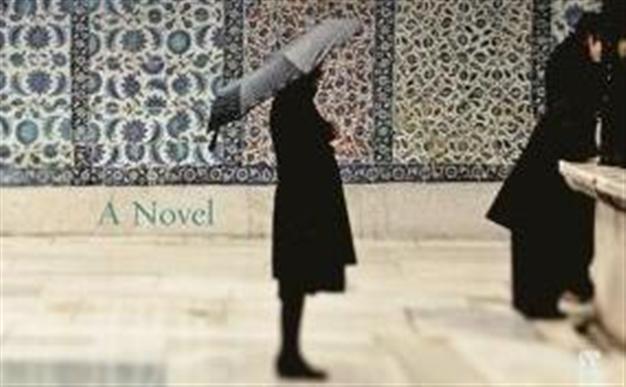‘Silent House’ by Orhan Pamuk
William Armstrong - william.armstrong@hdn.com.tr
 ‘Silent House’ by Orhan Pamuk, translated by Robert Finn (Faber and Faber, 1983/2012, 22TL, pp 411)
‘Silent House’ by Orhan Pamuk, translated by Robert Finn (Faber and Faber, 1983/2012, 22TL, pp 411)In a recent interview with Orhan Pamuk in the Financial Times, Simon Schama reveals something interesting about how Pamuk wrote “My Name Is Red,” his novel on 16th century Ottoman miniaturists: “At some point [he] decided that this might not be enough to hold the reader, and a murder story (about which he feels wistful) was introduced.” Pamuk’s fiction has always struggled between his taste for lofty intellectual flights of fancy and the need to spin a good yarn – with varying degrees of success. “Silent House,” published in Turkish in 1983 but only recently translated into English, is one of his more successful balancing acts between the two impulses. It successfully knits social, historical and philosophical considerations into a story in which the reader actually cares about the characters’ dilemmas.
The novel takes place in the month before Turkey’s 1980 military coup, and centers around a ritual family reunion that takes place every summer in a small fishing town near Istanbul. The family gathers at the decrepit mansion of bedridden 90-year-old Fatma, who is looked after by a deferential dwarf, Recep. Fatma has lived there ever since her late husband, Selahattin, was expelled from Istanbul by the Young Turk regime as an idealistic young doctor. Isolated in the decaying old house, Selahattin became increasingly embittered as he wasted his years and his fortune writing a sprawling encyclopedia in a desperate attempt to spread enlightenment ideas in “the benighted East.”
Arriving for the annual gathering in remembrance of the paterfamilias are Fatma’s three grandchildren: Faruk, a fattening and alcoholic recently-divorced historian; Metin, an ambitious teenage tutor who socializes with the local rich kids; and their sister Nilgün, a sensitive young leftist. On the sidelines is the bitter Hasan, involved with a local gang of nationalist thugs and suffering from an ill-fated obsession with Nilgün. Hasan is the poor nephew of the servant Recep, who we later learn is himself one of the illegitimate children of Selahattin, meaning that all the characters are related, although unaware of this fact. The reader is helped to navigate through this intimidating web of individuals by the fact that the chapters are written as interior monologues narrated by each of them, a Faulknerian touch that gives thrust and variety to the story.
Less of a head-scratcher than some of Pamuk’s later, more baroque works, “Silent House” probably makes for an excellent introduction to him for the uninitiated. Still, perhaps owing to its position early in his career, it is also one of the most parochially Turkish of his novels, so readers unfamiliar with the tides sweeping the country at the time will face a different set of challenges. It’s an intense, claustrophobic read, with a story wound as tightly as any Pamuk has written (though perhaps slightly over-contrived). The dialogue is slightly wooden, but this could be down to the translation, which is far from seamless (though not nearly as bad as some critics have suggested). Overall, as a gripping snapshot of a bitterly divided country teetering on the brink of a coup, “Silent House” is more than just a sign of things to come for the future Nobel Laureate, but urgent literature in its own right.
Notable recent release
‘Institutional Change in Turkey: The Impact of European Union Reforms on Human Rights and Policing’ by Leila Piran
(Palgrave Macmillan, £57, pp 208)
William Armstrong,
 ‘Silent House’ by Orhan Pamuk, translated by Robert Finn (Faber and Faber, 1983/2012, 22TL, pp 411)
‘Silent House’ by Orhan Pamuk, translated by Robert Finn (Faber and Faber, 1983/2012, 22TL, pp 411)